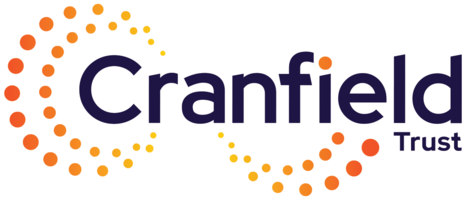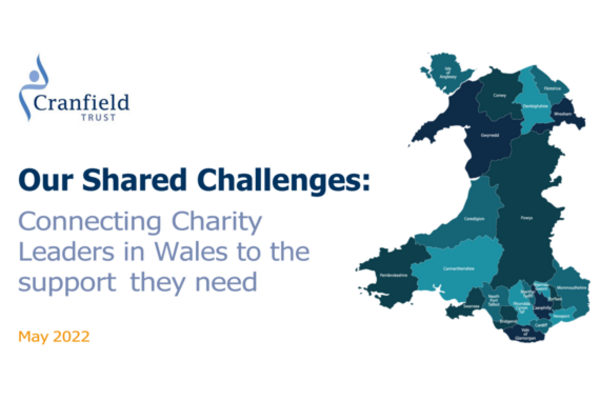Caroline Clark, an experienced Insolvency practitioner and long-standing Cranfield Trust volunteer shares her professional insight about Trustees’ potential personal liabilities in the event of insolvency.
Unavoidable one off circumstances, broken promises, changes to global economy and politics, lack of foresight, insufficient financial forecasting, unexpected expenses... whatever the reasons, insolvency leading to charity closure is painful and hard to accept. But if you are the Trustee of a charity do you know if you might be personally liable for the charity’s debts in the event of insolvency?
For most charities, the biggest concern is always for its service users, followed by the staff but do Trustees know their responsibilities and liabilities?
What is insolvency?
Many charities live with constant financial uncertainty. This is different from insolvency, which has a legal definition combining the inability to pay debts as they fall due with having liabilities that are greater than assets.
If a charity cannot pay its debts when they fall due or it is becoming apparent that the charity is approaching a time when it will not be able to pay its debts when they fall due, and no other funding is immediately available, then the Trustees should immediately seek professional advice from an insolvency practitioner.
Prompt action should be taken as soon as insolvency, or the likelihood of approaching insolvency, is recognised. Avoid increasing liabilities wherever possible and consider ceasing to trade. Consider other options such as merging with another charity or stopping projects that cannot be afforded. It may be possible for another charity to assist by taking over the business and employees of the insolvent charity.
For all charities in this situation, the immediate concern will be for those helped by the charity to ensure that they do not suffer but Trustees should also be aware of their legal responsibilities to creditors, who may well include employees for arrears of pay, holiday pay and redundancy pay.
If employees are to be made redundant then there may be legal requirements for a consultation process, depending on the number of employees involved.
When might Trustees be personally liable for the charity's debts?
An insolvent incorporated charity is a limited company and would be wound up following the Insolvency Act 1986. The Trustees should not automatically be personally liable for the charity's debts and the distribution of the charity's assets to its creditors should be carried out by a licensed insolvency practitioner.
An unincorporated or unregistered charity will still be subject to the Insolvency Act 1986 but it is not a limited company so the Trustees may be personally liable for the unregistered charity’s debts. Trustees of an unincorporated or unregistered charity should always seek professional advice about whether they might be personally liable for the charity’s debts even if the charity is trading successfully and is solvent. It is important that Trustees are fully aware of their potential liabilities so that if necessary changes can be made to the legal structure of the charity in order to minimise the personal liability of the Trustees. This is part of good governance.
Cranfield Trust can give some help to Trustees who are concerned that their charity may be insolvent but it may well still be necessary to instruct an insolvency practitioner. Professional assistance is available from Cranfield Trust and it is important not to delay taking advice and action.
Governance has already been mentioned and good governance of a charity by the Trustees is very important to ensure that the Trustees can show that they have given the right duty of care to the charity and its stakeholders, including creditors. This is very relevant in the event of a charity becoming subject to a formal insolvency procedure such as liquidation or administration. The insolvency practitioner appointed to the charity will carry out investigations into the management of the charity by the Trustees.
In the event that the Trustees have knowingly allowed the charity to trade while insolvent, have made payments to some creditors in preference to others or have allowed assets to be sold at a very low value, for example, then action may be taken against the Trustees to recover the funds lost by the charity. It should be emphasised that although investigations take place in all administrations and insolvent liquidations this does not mean that legal action is automatically taken against directors or Trustees.
Cranfield Trust also offers more advice and guidance on charity governance.
Caroline Clark is a qualified insolvency practitioner and consultant. Caroline began her career in insolvency over 30 years ago and has since specialised in technical, compliance and regulatory matters.
Caroline is now a director of RMCSC Ltd, providing a bespoke advisory service to insolvency practitioners and others needing skilled professional advice about insolvency. Caroline became a Cranfield Trust volunteer in 2015 and has since advised charities experiencing financial difficulties as well as providing information about insolvency that can be used by all not for profit organisations accessing the resources pages on Cranfield Trust’s website.
Caroline qualified as an insolvency practitioner in 1991 and graduated from Birmingham University with an MBA in 1999.
Article written in August 2025.








